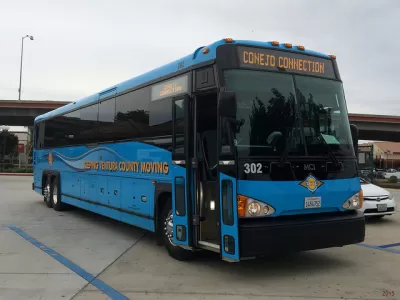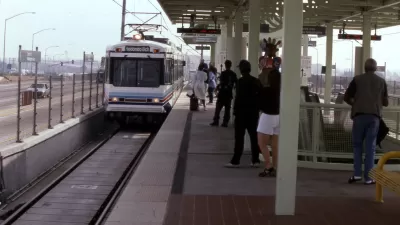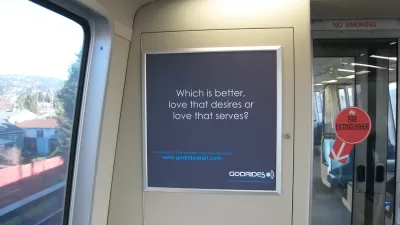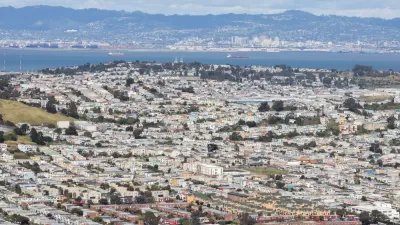Ventura County's transportation sales tax measure failed after receiving almost 57 percent of the vote, illustrating the difficulty in passing tax measures intended for transportation improvements in California.

Many unsuccessful tax measures in California receive a greater percentage of votes than taxes that pass in other states, but the 1978 Proposition 13 sets the threshold for passage at two-thirds for taxes intended for specific purposes, rather than going to a general fund.
"To get to a two-thirds vote, you have to be perfect," said Darren Kettle, executive director of the Ventura County Transportation Commission which sponsored the measure, at an event at the Ventura County Community Foundation in Camarillo, according to Mike Harris, transportation reporter for the Ventura County Star.
According to the ballot language [PDF], voters were asked to increase the county sales tax "by one-half cent for thirty years, raising $70 million annually, with independent oversight and audits, and with all funds benefiting local residents to help preserve Ventura County’s quality of life by:
...fixing potholes, repaving streets, repairing bridges; improving traffic flow and safety on 101 and 118; keeping senior, veteran, disabled, and student bus fares affordable; increasing bicycle and pedestrian safety; protecting waterways and beaches from polluted runoff and restoring watersheds;"
"Under the plan, 50 percent of sales tax funds will be allocated to Ventura County’s 10 cities and the County of Ventura for local transportation priorities," according to the transportation commission. "Over thirty years that translates to about $1.65 billion for improving local roads, filling portholes and building bike paths and sidewalks." The same amount would be raised for county transportation improvements.
Kettle ascribes five reasons for the measure's failure to achieve a 'yes' vote from 66.67 percent of voters:
- Competing sales tax measures in Ventura, known officially as the City of San Buenaventura, Measure O, and Santa Paula, Measure T. Both measures directed revenue to their cities' general funds. Each passed with 57.5 percent of the vote.
- Competition for donations from the much larger Measure M in neighboring Los Angeles County, according to the campaign committee, Citizens for Traffic Relief,
- "Measure AA competed for voters' attention with Measure C, the Ventura County Save Open-space & Agricultural Resources [SOAR] initiative, Kettle said." It passed with almost 59 percent of the vote. Obviously voters hadn't read a critical Planetizen post on that initiative. Voter rejected a competing SOAR initiative, Measure F, which would have loosened restrictions for farmers.
- A well-funded opposition committee — "Stop New Big $3.3 Billion Tax — led by Ventura County Supervisor Peter Foy and former Rep. Elton Gallegly, R-Simi Valley, Kettle said."
- It didn't help that Harris' paper editorialized against the measure, which the opponents used to full advantage. The paper opposed the measure because the "dilution of the impact of the money...creates a fatal flaw in the measure."
- "Even though these dollars are intended to augment current funding, we can envision cities shifting general funds they had designated for transportation to other needs, which means their residents might not receive any additional transportation projects for their additional sales tax," they argued. However, Kettle noted that the measure passed in all ten cities.
- The same paper editorialized in support Measure T, a 1 percent, general sales tax measure for the city of Santa Paula that was approved with 57.5 percent of the vote.
As a result, Ventura County remains "the only Southern California county without a piece of its sales tax being designated for transportation," observed the Star.
Comparison to Bay Area transportation measures
Planetizen observed that while the three-county BART property tax, Measure RR, passed in the Bay Area with 70.7 percent of the vote, voters in two of the counties rejected city transportation taxes. The reverse was true in Ventura County, where voters approved two city transportation taxes but rejected the county tax. Voters may have their own threshold when it comes to tax increase measures: two is one too much.
The analogy doesn't fit entirely as voters in Contra Costa County didn't support Measure RR with two-thirds of the vote, but voters in Alameda and San Francisco County made up the difference.
One final observation: Ventura County had a remarkable ballot this November, using every letter of the alphabet to describe the 26 city and county measures in addition to Measure AA. Of the 27 ballot measures, only three were defeated.
Hat tip to Metro's L.A. Transportation Headlines.
FULL STORY: Factors cited in defeat of transit tax

Maui's Vacation Rental Debate Turns Ugly
Verbal attacks, misinformation campaigns and fistfights plague a high-stakes debate to convert thousands of vacation rentals into long-term housing.

Planetizen Federal Action Tracker
A weekly monitor of how Trump’s orders and actions are impacting planners and planning in America.

Chicago’s Ghost Rails
Just beneath the surface of the modern city lie the remnants of its expansive early 20th-century streetcar system.

Bend, Oregon Zoning Reforms Prioritize Small-Scale Housing
The city altered its zoning code to allow multi-family housing and eliminated parking mandates citywide.

Amtrak Cutting Jobs, Funding to High-Speed Rail
The agency plans to cut 10 percent of its workforce and has confirmed it will not fund new high-speed rail projects.

LA Denies Basic Services to Unhoused Residents
The city has repeatedly failed to respond to requests for trash pickup at encampment sites, and eliminated a program that provided mobile showers and toilets.
Urban Design for Planners 1: Software Tools
This six-course series explores essential urban design concepts using open source software and equips planners with the tools they need to participate fully in the urban design process.
Planning for Universal Design
Learn the tools for implementing Universal Design in planning regulations.
planning NEXT
Appalachian Highlands Housing Partners
Mpact (founded as Rail~Volution)
City of Camden Redevelopment Agency
City of Astoria
City of Portland
City of Laramie





























